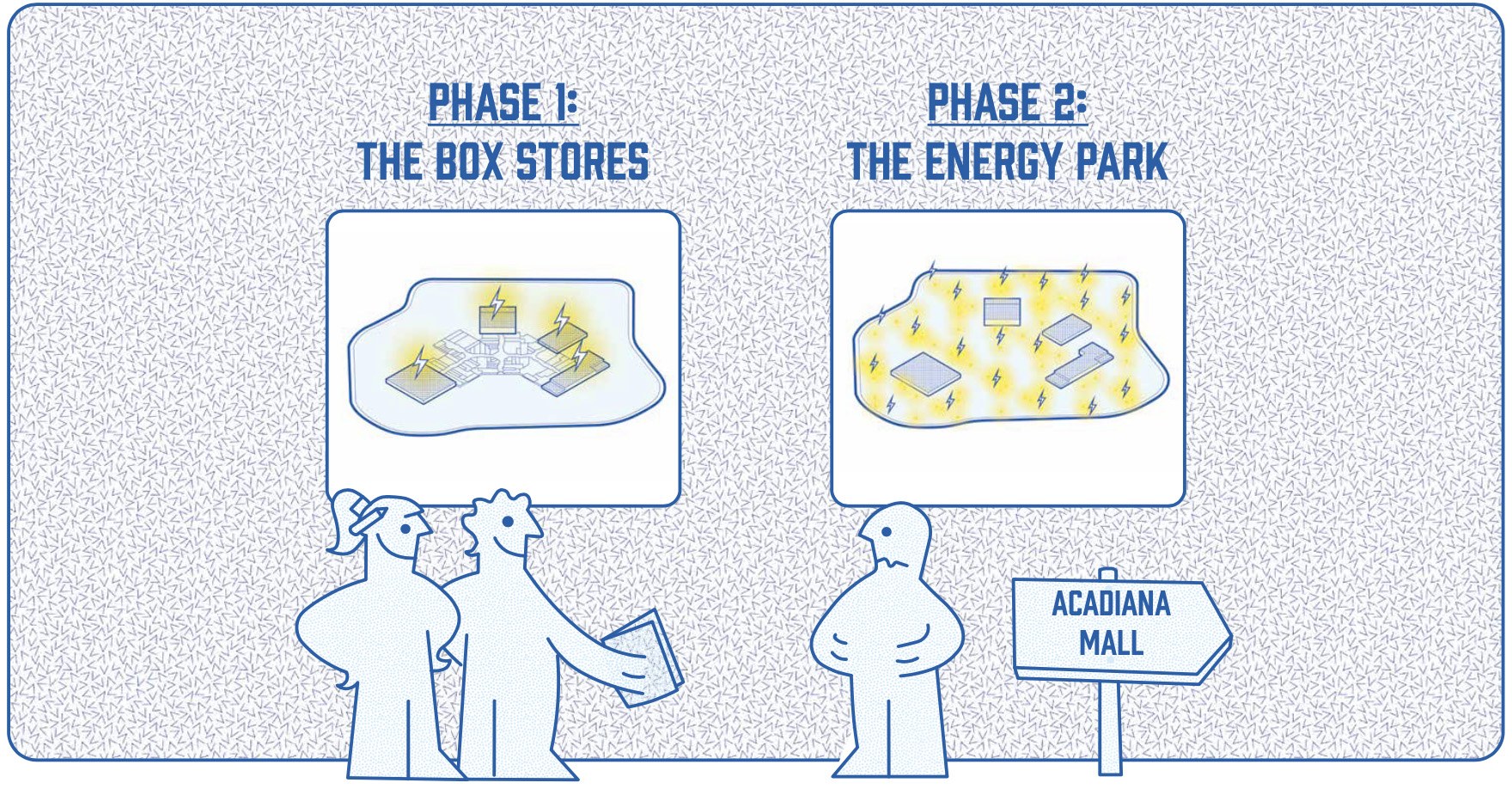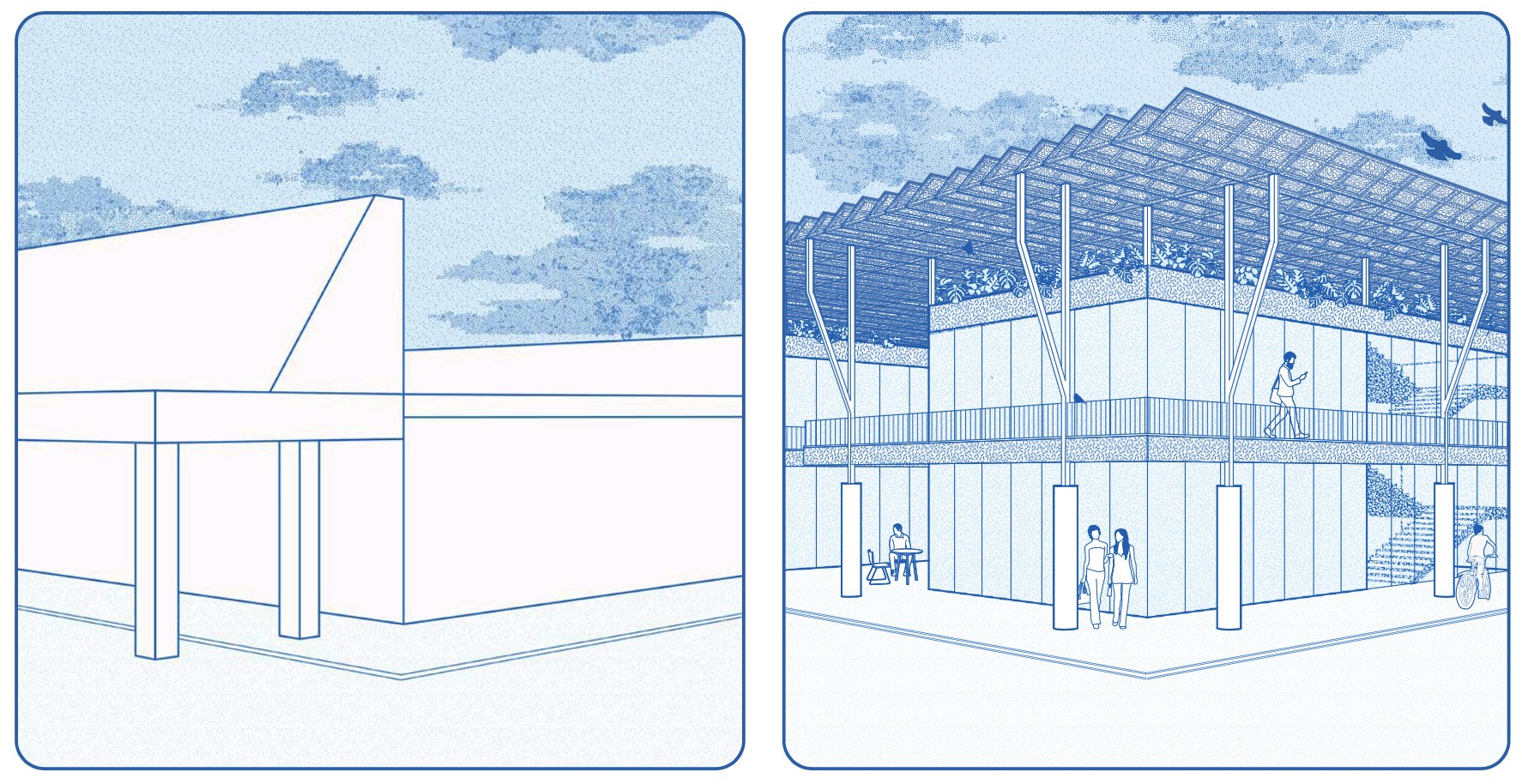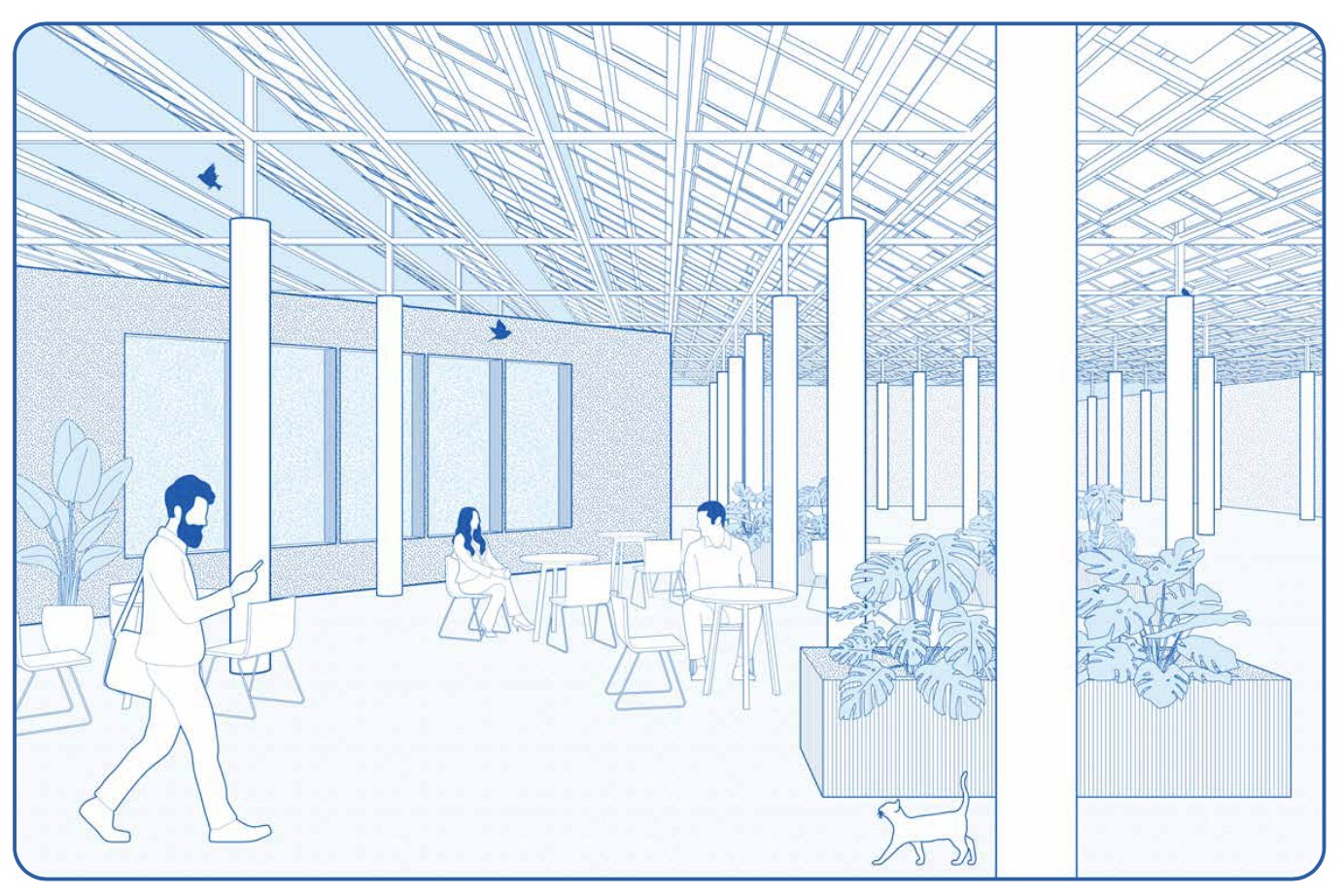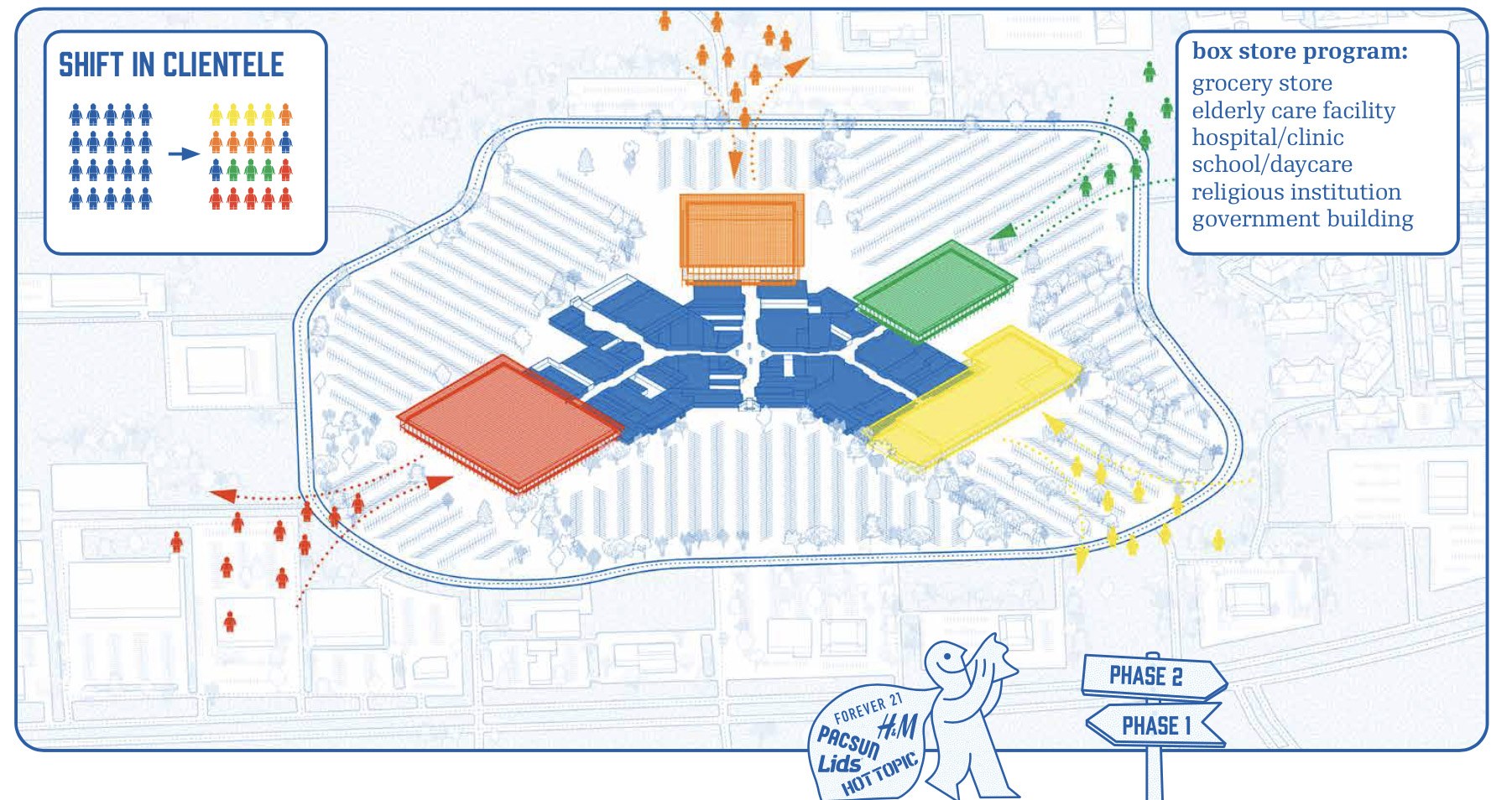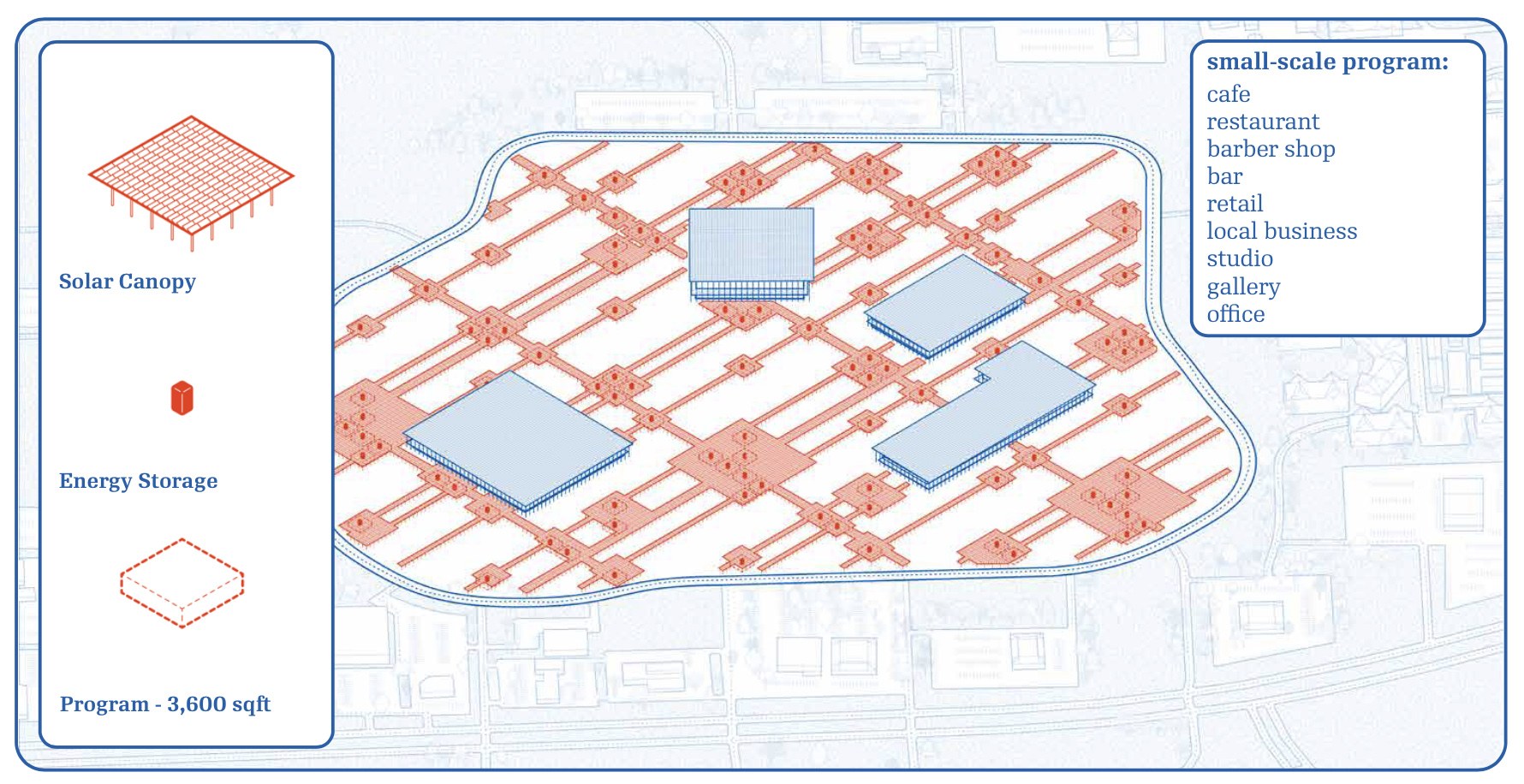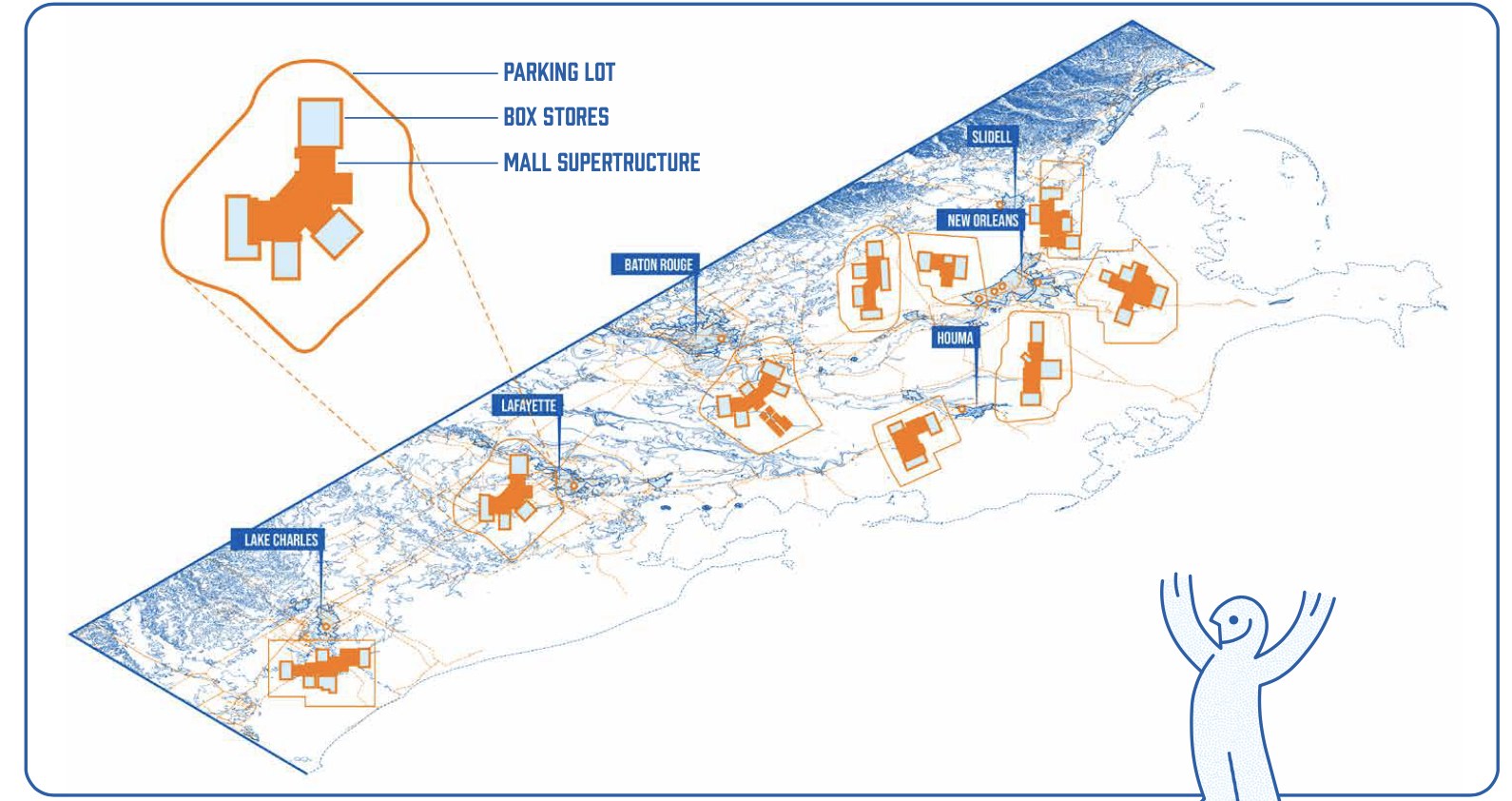Thesis Highlights
“Out of Scale"
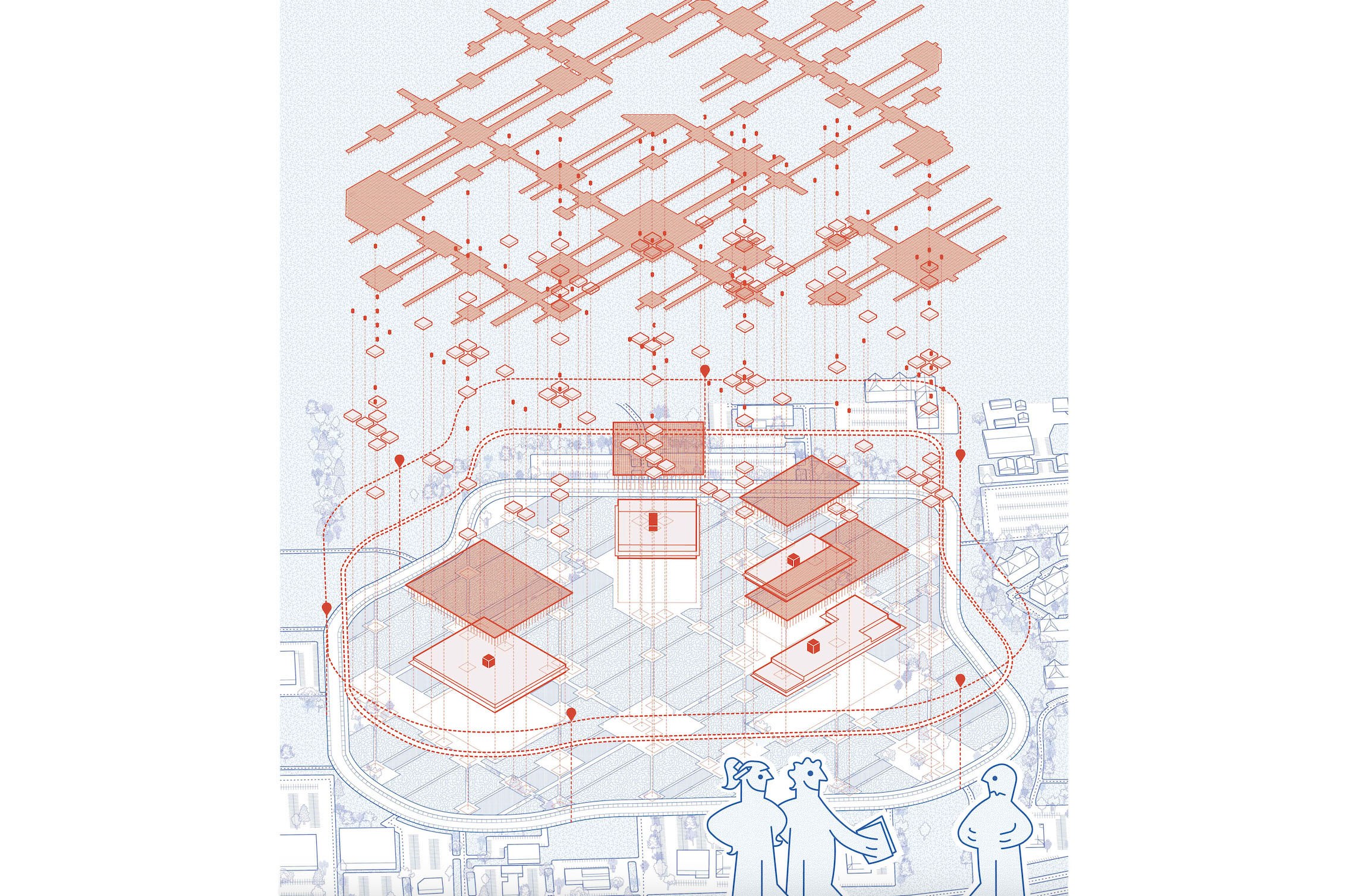
Connor Little and Merrie Afseth, 2023
“Out of Scale: Disrupting the Typology of the American Mall Standard of Walkability”
Once a nexus of the suburban lifestyle, the Acadiana Mall now stands as a shell of its 1979 image, with one of its four box stores six years abandoned, and with eighteen of its smaller stores sitting vacant. The 2004 renovation has contributed to an outdated, dark, and dingy interior, and the site is essentially a pedestrian island only accessible by car: surrounded by a sea of concrete and manicured grass lawns. Conversely, younger generations find walkable communities much more appealing than auto-centric suburbia, opting to move into already-established historic cores. In the Gulf Coast region, sprawling systems of life (primarily energy, water management, single-use zoning, and daily transportation needs) contribute to ineffective disaster management and exacerbate global warming through excessive energy consumption.
Denser communities with more localized daily life patterns and infrastructural systems have proven to be more resilient in the face of disaster. The walkable environment of denser communities can also curb the impacts of climate change; in the U.S, 76% of commuters travel by car to get to work, and the transportation sector contributed to a whopping 1,018 million metric tons of CO2 emitted into the atmosphere last year alone. Transitioning energy dependency to more localized, greener sources like solar is also paramount in designing for the future. In Louisiana, about 86% of the energy produced comes from large natural gas facilities, and our energy infrastructure is mismanaged by mega-corporations, with costs associated with damage and outages often falling on the consumers.
These anthropogenic problems are typical of the mall typology regardless of context. Through the development of a field condition, we can organize these demands into a series of general goals for all of the mall’s stakeholders in order to establish an action-plan for redevelopment. Through reimagining the relationships between the box store, the mall, and the community, we can develop a new model for the regeneration of the site. Here, the Acadiana Mall serves as a testing ground for a new model of intervention.
Through establishing a field condition, we can propose a system for mall redevelopment that centers solar energy as a catalyst for generating attractability. The proposal is tested on a mall with typical components of the typology: The Acadiana Mall in Lafayette, Louisiana.
Faculty Thesis Directors: Cordula Roser Gray & Ammar Eloueini
WORK
